Photography Equipment Guide for Exceptional Product Shots
Product photography is an art form that combines creativity with technical expertise. The goal is simple. Showcase a product. Highlight its features and appeal to potential customers. From novice to expert, capturing stunning product images hinges on essential equipment. Learn the key tools that can elevate your photography. They will turn ordinary snapshots into captivating visual stories. This guide reveals the gear secrets behind great product shots. It empowers photographers of all skill levels to achieve professional results. Their work must stand out.
1. Camera: The Heart of Your Setup
You can technically take product photos with a smartphone. But, a DSLR or mirrorless camera will greatly improve your shots. These cameras allow more control over image settings. They also have a higher resolution, which is crucial for detailed product shots.
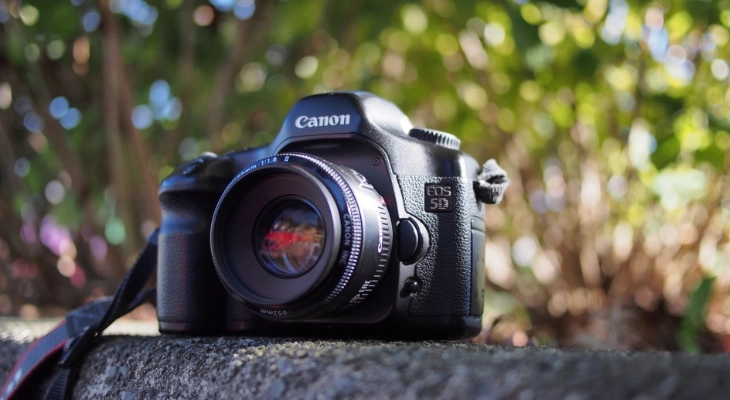
Key Camera Features to Look For
- High Resolution : Select a camera with a threshold of 20 megapixels. It will capture sharp, detailed images. These are vital for showcasing product features.
- Full-frame Sensor : Crop-sensors suit various needs. But, full-frame cameras excel in low-light image quality. Their superior performance shines through, offering photographers a notable advantage in challenging conditions.
- Manual Control : Seek a flexible camera offering hands-on mastery over aperture, shutter speed, and ISO settings. This adaptable tool empowers photographers, granting precise control of light and motion. Such features unlock creative potential, enabling artistic expression through technical finesse. Choose wisely; your camera should be an extension of your vision. Such flexibility empowers your creative vision. This flexibility is necessary to control the depth of field and exposure.
Popular models for product photography include the Canon EOS R, Sony Alpha a7 III, and Nikon D850.
2. Lens: The Secret to Crisp Details
Prime lenses excel in product photography , shaping image quality decisively. Your lens choice can make or break a shot, elevating ordinary items to extraordinary visuals. Choosing the right glass is vital for capturing products. It is sharp and can create a beautiful bokeh (background blur).
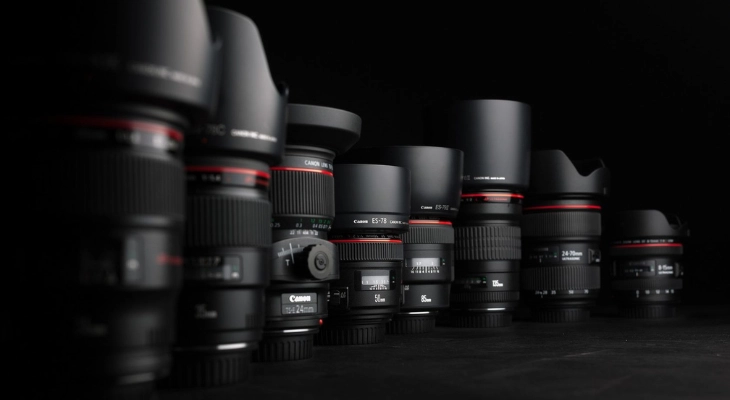
Recommended Lenses:
- 50mm f/1.8 Lens : This is a great choice for beginners. It's cheap and has a wide aperture. This blurs the background, making the product stand out.
- 100mm Macro Lens : A macro lens is a must for photographing small, intricate products, like jewellery or electronics. It lets you capture fine details in high resolution. It makes even the tiniest features sharp and clear.
3. Tripod: Stability and Precision
When shooting product photos, stability is essential. Sharp, clear shots beckon with a tripod's steady hand. It banishes camera shake, proving indispensable when light fades or shutters slow their dance.
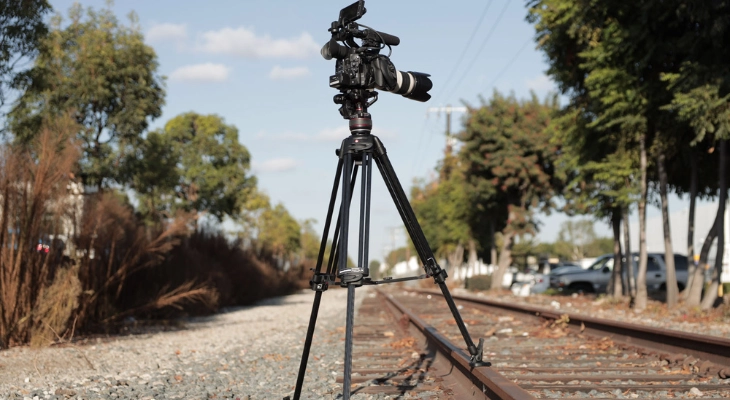
Features to Look for:
- Adjustable Height : A tripod with adjustable legs lets you set your camera at the right height and angle. This is key for the best perspective.
- Sturdy Build : Stability reigns supreme for tripods. They should firmly cradle your gear, be it a hefty DSLR or sleek mirrorless, without a hint of wobble. A rock-solid foundation ensures crisp shots and peace of mind.
Look for brands like Manfrotto, Benro, or Gitzo, which are known for making high-quality, durable tripods.
4. Lighting Kit: Illuminate Your Product Perfectly
Illumination reigns supreme in capturing product images. Expertly crafted light accentuates a product's allure whilst banishing unwanted shadows. For optimal results, aim for gentle, uniform illumination that caresses your subject. This approach elevates your products, ensuring their finest qualities shine through in every frame. It prevents harsh highlights and unflattering shadows.
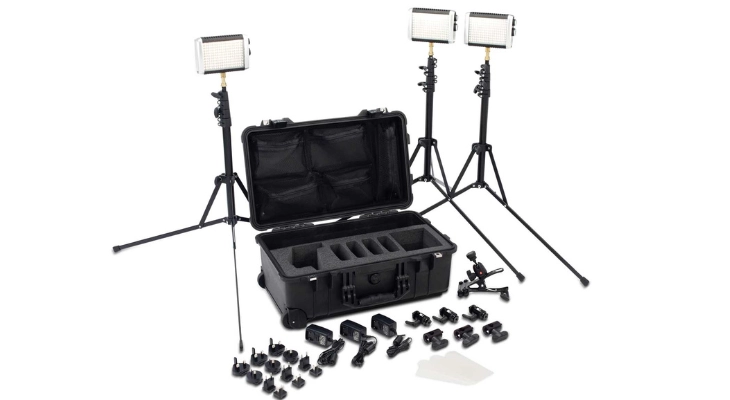
Lighting Options:
- Softboxes : Softboxes scatter light evenly across a wide area, creating gentle illumination. They're ideal for product photography, bringing out textures and fine details with their diffused glow. These versatile tools excel at producing soft, flattering light that enhances your subject's appearance.
- Ring Light : Smaller products and close-up shots shine with a ring light's embrace. This circular illuminator casts an even glow, banishing harsh shadows and lending a flattering radiance to every detail. Its uniform light wraps around objects, revealing textures and contours with gentle precision.
- LED Panel Lights : From dim to dazzling, LED panels adapt. Studio-friendly, they paint with light, offering a spectrum of hues and intensities. Their versatility shines through, delivering precise illumination for any creative vision.
When setting up your lighting, aim for a three-point lighting system: a key light, a fill light, and a backlight. This ensures your product is lit from all angles. It highlights its best features without overpowering shadows.
5. Light Modifiers: Control Your Lighting
Also, light modifiers like reflectors and diffusers help control light's effect on your product.
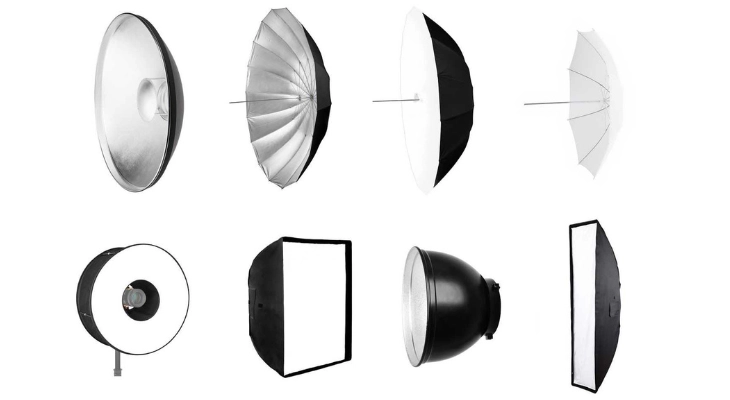
- Light dances off reflectors, illuminating products with grace. These versatile tools banish shadows and breathe life into images. Silver, gold, and white surfaces each paint a unique luminous palette, sculpting depth and texture. Reflectors transform flat scenes into vibrant, multidimensional masterpieces.
- Diffusers : Light diffusers spread illumination evenly, softening harsh shadows. They're particularly effective with intense sources like flashes or direct beams. Diffusers disperse light. They create a more flattering, balanced look for products. This enhances their visual appeal in photos.
A cheap, 5-in-1 reflector kit is a great, versatile option for controlling your lighting.
6. Background and Props: Make Your Product Pop
The background can make or break a product photo. A cluttered background will distract from the product. A clean, simple background lets the product shine.
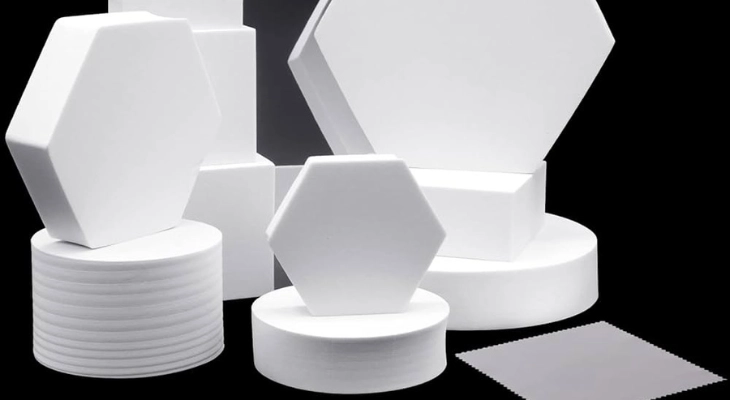
Background Options:
- Seamless Paper : Opt for a seamless, single-hued backdrop to showcase your products. Paper backdrops offer a range of colors, letting you select the perfect complement to your item's visual appeal. Fabric Backdrops: For a luxe, textured look, use fabric backdrops. Velvet or linen can create a sophisticated atmosphere.
- White Foam Boards : They are cheap and can create a white background. This is great for e-commerce photography.
Props can also be used to help contextualize your product. However, keep them minimal and relevant to avoid overpowering the main subject.
7. Post-Processing Software: Perfect Your Photos
Unleash your product photos' potential with post-processing software. Even top-notch gear can't match the power of editing. Fine-tune exposure, balance colors, sharpen details, and banish flaws. Take your images from good to extraordinary with a few digital tweaks.

Recommended Software
- Adobe Lightroom : Product Photographers swear by this software marvel. It fine-tunes exposure, white balance, and contrast. This boosts your product's visual appeal. Lightroom's tools transform images. It is the top choice for enhancement.
- Adobe Photoshop : For advanced edits like removing backgrounds, use Photoshop.
Using these tools well will improve your product images. They'll look more polished and professional.
Choose The Best Product Photographer For Your Brand Success
Stunning product shots demand a blend of tools, skill, and imagination. Equip yourself with a top-notch camera, lenses, lighting, and editing software. These essentials elevate your images, enticing potential buyers. Hone your craft through diligent practice and meticulous attention. Your refined product photos will set you apart in a crowded market. They will captivate customers and boost sales. Master this art to showcase your wares in their best light.
However, beyond the tools, the expertise of a professional photographer makes all the difference. For exceptional product photography in Coimbatore. Pavithra Photography stands out as a trusted name, delivering excellence in every shot. If you need assistance or are interested in our services, feel free to contact us!



















